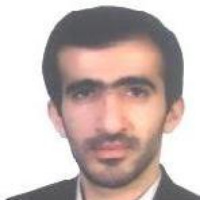STOCHASTIC ROBUST DYNAMIC MODEL DESIGN FOR LOCATION AND ALLOCATION OF HEALTH SERVICE NETWORK REGARDING RESTRICTED CAPACITY AND DISRUPTION
To locate hospitals, several points including the population of the area under the covering, transportation costs, and physical distance among the hospitals are very important. In the present study, health service networks were classi ed into two levels of low-level hospitals (provision of public health services) and high-level hospitals (providing specialized health services). In high-level hospitals, patients require professional services, and in the low-level ones, hospitals do not have the power to respond to specialized health services demands. They refer the patients to high-level hospitals in the case of patient visits or in emergency situations by ambulance. In the present case, patients are divided into two categories including the high priority (the category in which immediate service delivery is needed) and low priority. Regarding this problem, a stochastic robust dynamic mathematical model for location and allocation of health network regarding limited capacity and disturbance is developed which tries to reduce the total costs including the real features of a real problem such as limited capacity. The limited capacity of hospitals revealed that the health network needed rede nition of di erent layers for the network in the disturbance situation. In this study, we try to reduce the total costs by reducing costs of hospitals and costs such as transportation and service to patients. To solve the model, two metaheuristic algorithms including Non-dominated Sorting Genetic Algorithm II (NSGAII) and Particle Swarm Optimization (PSO) are applied. Taguchi method design is applied to minimize the cost of parameter tuning including the level of factors related to the proposed. The results demonstrated the applicability of the model to large-sized problems. For example, the total cost is minimized in conditions that are considered in the genetic algorithm, the population parameter at the highest level (150) and the intersection parameters, and the probability of mutation at the lowest level (0.7 and 0.1).
-
The Mathematical Model for Location-Routing Problem of Relief Logistics Considering the Types of People Under Conditions of Uncertainty
Behrooz Bayegan, Ahmad Mehrabian *, , Mohammad Jafar Doosti Dylami
Iranian Journal of Supply Chain Management, -
Optimizing Open Shop Scheduling: Minimizing Makespan through Whale Optimization Algorithm and Transportation Time Consideration
Morteza Enayati, *, Fahime Lotfian Delouyi
Journal of Quality Engineering and Production Optimization, Winter-Spring 2023


